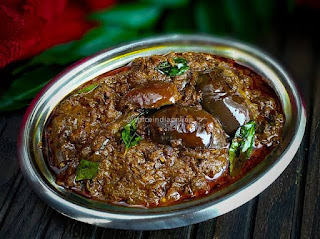Kanji, a traditional South Indian rice porridge (also known as congee or gruel), supports digestion, immunity, and skin health in natural ways due to its simple composition and ease of assimilation by the body. Here's how:
1. Supports Digestion
-
Easily digestible: Kanji is made with rice and plenty of water, making it very light on the stomach and easy to digest, especially when the digestive system is weak.
-
Soothing for the gut: The liquid consistency helps soothe the intestinal lining and can help in conditions like gastritis or acid reflux.
-
Prebiotic potential: If fermented overnight (as in some traditional preparations), kanji can foster good gut bacteria, which promotes better digestion and nutrient absorption.
2. Boosts Immunity
-
Rich in nutrients: Though simple, kanji provides essential nutrients like B-vitamins, iron, and sometimes electrolytes (especially when made with vegetables or seasoned with salt).
-
Fermented kanji: Traditional fermented rice kanji contains beneficial bacteria (probiotics) that improve gut flora, which is directly linked to stronger immune function.
-
Healing ingredients: When combined with spices like ginger, garlic, turmeric, or curry leaves, it offers additional antimicrobial and anti-inflammatory benefits.
3. Enhances Skin Health
-
Hydration: The high water content in kanji helps keep the body and skin hydrated.
-
Detox effect: It can help flush toxins from the digestive system, leading to clearer skin.
-
Amino acids & minerals: Rice water (a byproduct of kanji) contains amino acids and antioxidants that nourish skin cells and improve skin texture.
-
Fermented rice water: Topically or internally, it is known in traditional beauty routines to brighten skin and improve elasticity.
Traditional South Indian Kanji Recipe prepare
Ingredients:
-
½ cup raw rice (preferably red rice or broken rice)
-
4 cups water
-
Salt to taste
-
Optional: 1 tbsp cooked moong dal or mashed garlic (for protein and flavor)
-
For tempering (optional):
-
1 tsp coconut oil
-
¼ tsp mustard seeds
-
Curry leaves
-
Crushed garlic or ginger
-
Instructions:
-
Wash the rice and soak for 15–30 minutes (optional for faster cooking).
-
In a pot, add rice and water. Cook on medium heat until the rice is very soft and porridge-like (30–40 minutes), stirring occasionally.
-
Add salt and optional ingredients like moong dal or garlic for added benefits.
-
For flavor, temper with coconut oil, mustard seeds, curry leaves, and crushed garlic or ginger.
-
Serve warm. You can also pair it with a pickle, curd, or coconut chutney.
Tip: Let it ferment overnight at room temperature for added probiotic benefits.
Who Should Avoid Kanji? – Know Before You Sip!
| Group | Why to Avoid/Be Cautious | Suggested Alternative/Tip |
|---|---|---|
| Diabetics (esp. with white rice) | High glycemic index – can spike blood sugar |
Use red rice, brown rice, or millet-based kanji |
Kidney patients |
May be high in potassium or sodium (especially with dal/salt) |
Use plain rice kanji, avoid salt & pulses – consult doctor |
| Gluten-sensitive or Celiac patients | Some mixed-grain kanji includes gluten (wheat/barley) |
Stick to pure rice or millet versions (ragi, bajra, jowar) |
| Low-carb/Keto followers | Kanji is high in carbohydrates | Avoid or use clear broths/low-carb veggie soups |
| Infants under 6 months | Not suitable before weaning | Introduce after 6 months with pediatric guidance. |















































%20(11).jpeg)
